Escape!
-
Ships in 3 to 4 weeks
Details
Description
SKU: CN.18100
Composed by Ed Keifer. Score and parts. Duration 3:30. Published by C. Alan Publications (CN.18100).An exciting new work by Ed Kiefer, Escape! is filled with rhythmic motifs, innovative harmonies and driving percussion to develop themes derived from The Coventry Carol. After a lush setting of the chorale in the middle section, the frantic opening theme returns, driving to the final escape.
Escape! is based on the Coventry Carol, a Christmas carol from the 16th century. The song was used in a play depicting the Massacre of the Infants, when all male children under the age of two were murdered by King Herod's men, in his attempt to kill the baby Jesus. The lyrics of the carol express the mother's sorrow of the inevitable death of her son. Lully, lullay, Thou little tiny Child, Bye, bye, lully, lullay. Lullay, thou little tiny Child, Bye, bye, lully, lullay. O sisters too, how may we do, For to preserve this day This poor youngling for whom we do sing Bye, bye, lully, lullay. Herod, the king, in his raging, Charged he hath this day His men of might, in his own sight, All children young to slay. That woe is me, poor Child for Thee! And ever mourn and sigh, For thy parting neither say nor sing, Bye, bye, lully, lullay. The piece starts with a chase scene of sorts. I tried to imagine the scene of soldiers and mothers running in every direction and the noise that would ensue. The middle section is a harmonization of the carol itself that ends peacefully, but immediately returns to the loud, unsettling sounds of the beginning. When performing this piece, make sure you play it fast enough to feel the 3/4 and 2/4 measures in 1. Also, embrace the dissonances-bring them out and really make them grind. The dissonances are exaggerated by the changing meter, but the 5/4 section settles that somewhat before the chorale. Make sure the chorale is played with big sounds and the horn suspensions are heard. The trombone glissandos should be as long as possible, adding to the confusion and anger at the end. Balance the last chords carefully-they should be huge, and again, angry sounding. The timpanist should be heard in the final measures, but bring the band back up in a huge crescendo in the last few bars. Although a little difficult to sight read because of the changing meter, the piece is fairly easy to perform. Once the students begin to feel the rhythm, they will have fun with it. I hope you, your students, and your audiences enjoy it!!
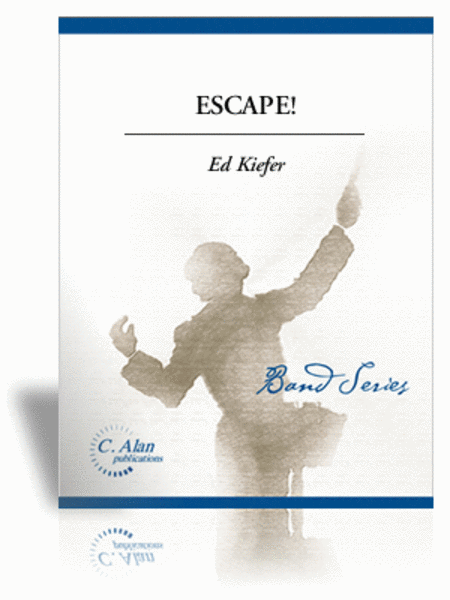
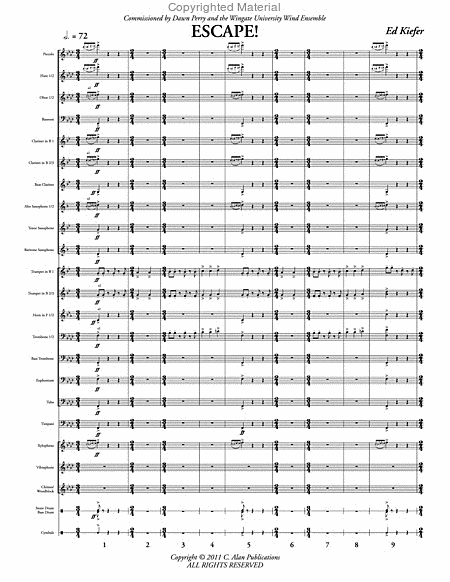
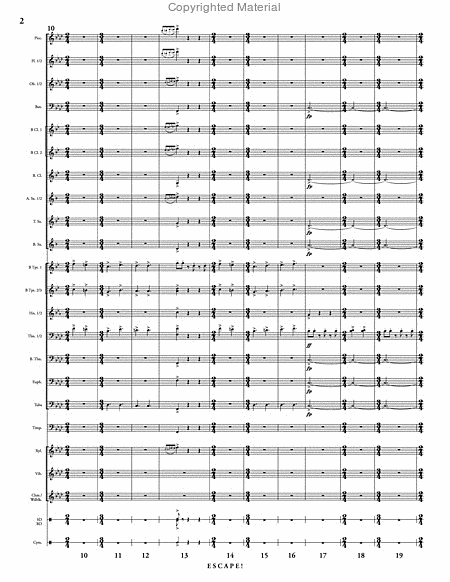
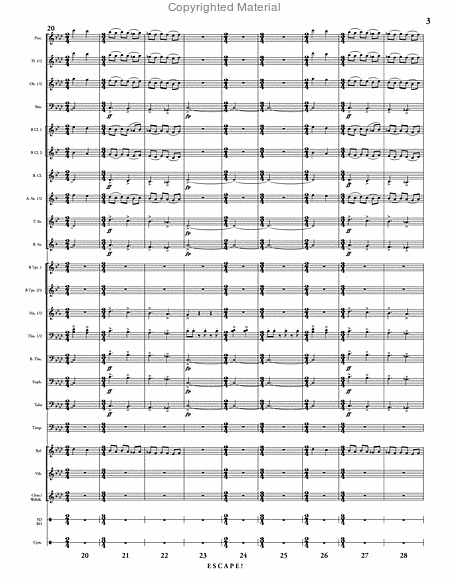
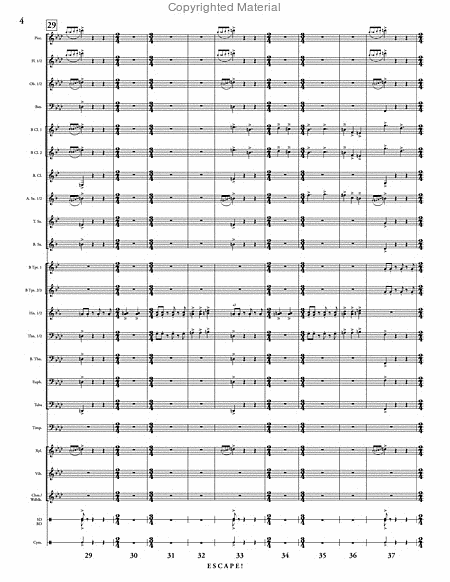
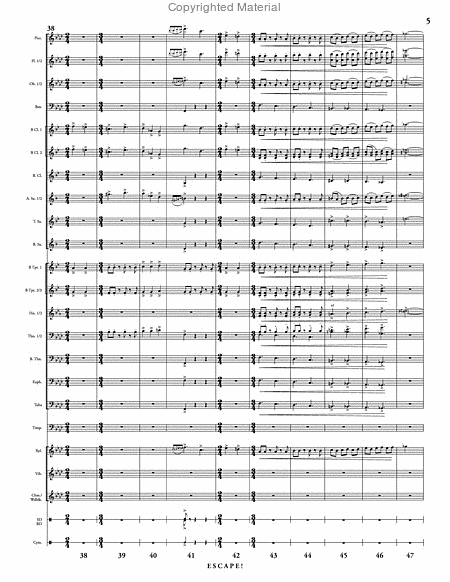
 Share
Share